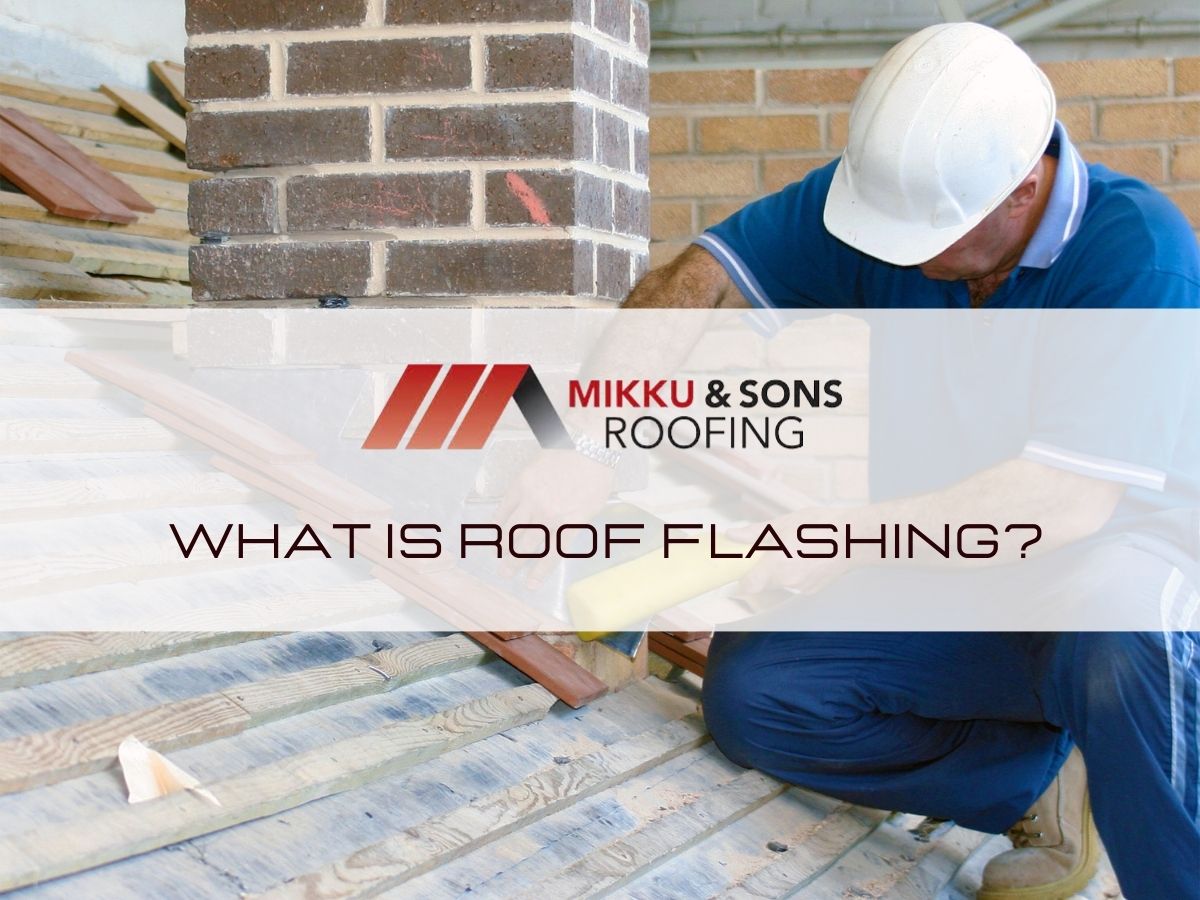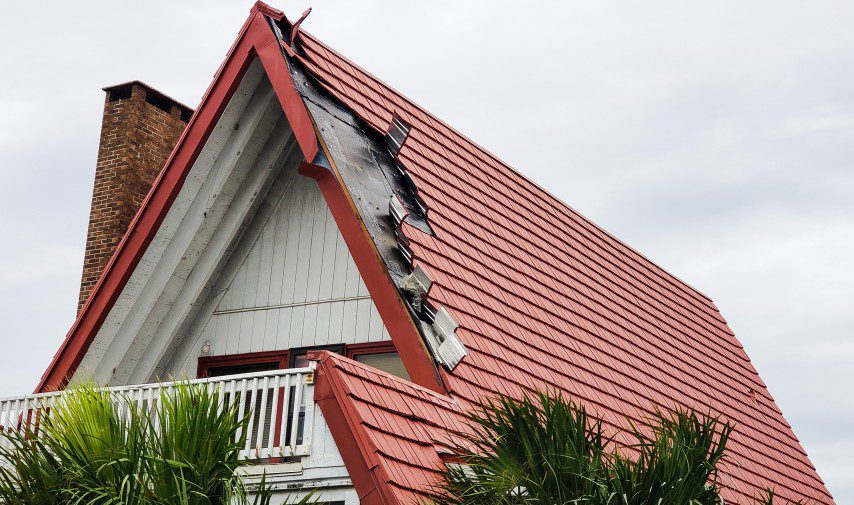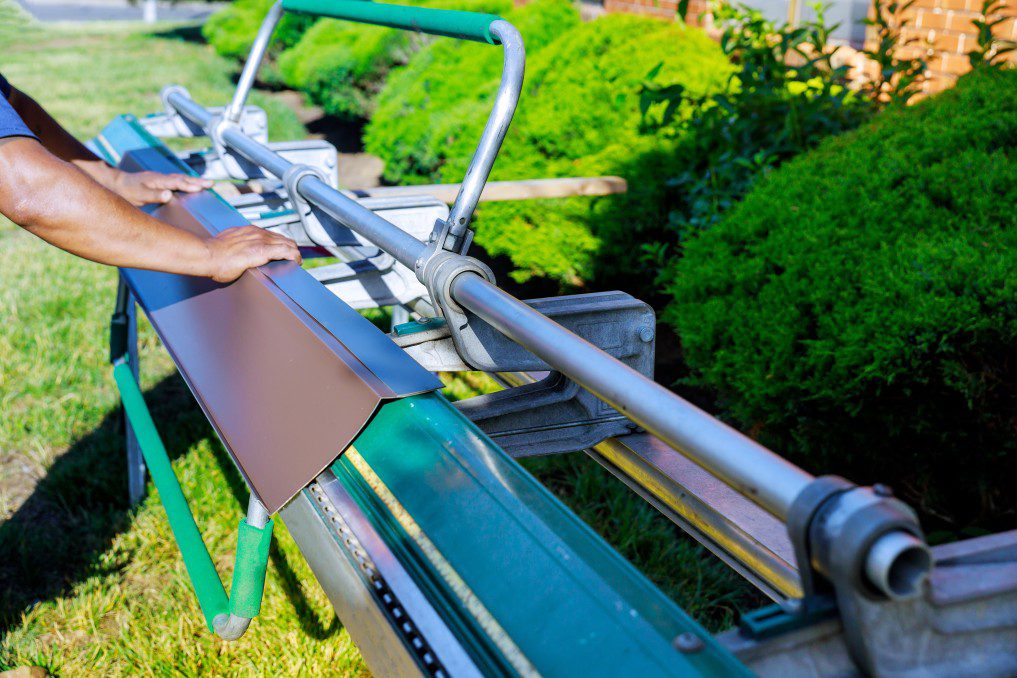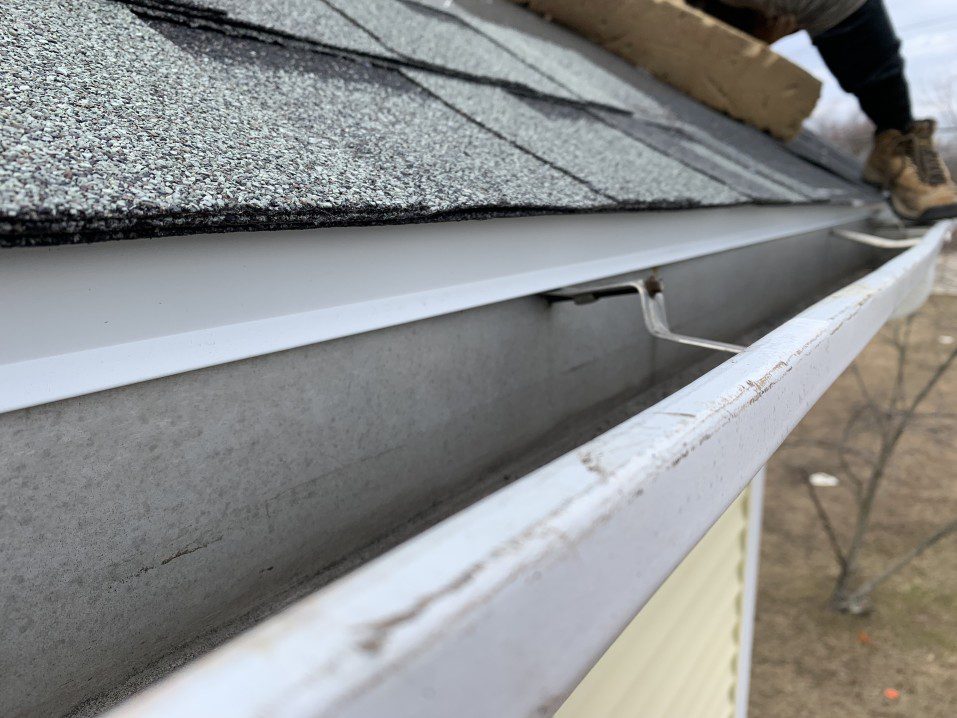

Roofing contractors use a thin metal sheet known as flashing to keep water away from your home’s walls, chimneys, and valleys. For every roof, it is essential to have this material.
Certain parts of your roof require flashing, such as the sidewalls and front walls where the roof meets a wall, the valleys where two roof slopes meet roof protrusions (such as bathroom or kitchen vents), and the roof’s edges (rakes and eaves).
Roof flashing protects the roof’s features, such as chimneys, vents, and skylights, against water penetration. After installing the roof flashing, the water should flow down the and into the shingles rather than the roof deck, where it would otherwise have found its way.

If there is no roof flashing, the water would slowly seep into the gap between the roof and the walls, causing potential floods.
Then, what should you do if you require roof flashing? Having a basic understanding of the various sorts and the best ways to use them might be beneficial.
Protect your property from water and the elements by installing aluminum roof flashing. A variety of weather-resistant flashing tasks can be completed with aluminum flashing.
Aluminum flashing can be molded to meet various requirements, including drip edges.
Aluminum flashing is popular among roofers because of its manufacturing simplicity and lightweight. Because plain aluminum reacts with and degrades when exposed to alkaline surfaces, it must be protected with a protective coating if it is to be utilized in combination with masonry or concrete.
Copper roof flashing is solderable and pliable, making it an ideal roofing material.
In addition, it is extremely robust and tends to last for an extended time. On the other hand, the homeowner’s choice of patina can affect the degree of discoloration. Chimneys are often surrounded by copper flashing.
Soft and cold-rolled varieties are available. Soft copper is an excellent material for this work because of its malleability and ease of shaping.
Cold-rolled material is a better option for most uses due to its increased strength and durability.
Steel flashing is the most often used form of flashing. When galvanized, it is not only aesthetically beautiful and flexible, but it is also corrosion-resistant.

It is sometimes known as “apron flashing” because it acts like an apron. A long, single piece of metal enables the water to run to the shingles.
When the house expands and contracts with the seasons, long lengths of continuous flashing will be challenging to flex with.
The base flashing is the portion of a flashing connected to or laying on the deck and is responsible for directing water flow onto the roof covering.
When the roof membrane meets a wall or curb, there are various points where base flashing must be applied to protect water from entering the roof space.
It is necessary to use two flashing pieces when a chimney is present. This is required to ensure that the rain is consistently in touch with a quickly moving surface.
Furthermore, placing flashing around a chimney is a notoriously tricky undertaking.
Covers and shields the top edge of a base flashing and the accompanying fasteners with formed metal or elastomeric sheeting affixed to or integrated into a wall, curb pipe, rooftop unit, or other surfaces.
Step flashing is generally used to protect the sides of walls and chimneys against water penetration.
A piece of metal is placed under each shingle laid right up against the wall’s side to prevent water from flowing through the wall. Because of this, the term “step” is employed in step-flashing.
Some skylight manufacturers provide flashing with their products, but others need you to build or buy it separately from the manufacturer’s website. It is beneficial to be aware of your alternatives ahead of time.
Metal flashing is used to safeguard open valleys on your roof, a crucial part of the roof.
To connect the end of the step flashing to the beginning of the gutter, roofers typically use a bridging material. In order to prevent water from accumulating on the wall, this type of flashing is installed at the top.
A drip edge is a metal flashing inserted at the roof’s margins to keep water away from your fascia and from going under your roofing components.
Water can seep behind your gutters without a drip edge and rot your fascia board and roof decking.

Roof flashing comes in a wide variety of forms, nearly as many as the roof’s components. There are several types of roof flashing since each one is needed to protect a distinct roof feature.
Continuous flashing that is more than a few feet long has difficulty bending with the seasonal temperature changes. It may distort or shatter if left alone, allowing water to seep through. In order to move with the house, lengthier sections should have expansion joints put in.
Two-part flashing also allows for expansion and contraction of the roofing materials, which keeps the system stable.
When it comes to roof flashing, how do you do it correctly? Here are a few tips that may be of use.
It is essential that you comprehend the three basic methods of installing roof flashing before you begin. Since the different types of roof flashing are unique, they may be used in various parts of the roof. Their installation may also be associated with a particular approach.
To keep water away from the wall and into the gutter, you need to use step flashing. As the name insists, step flashing is installed in separate steps.
Each step has a layer of shingles, allowing water to flow from the top to the bottom.
Step flashing is most appropriate for areas where the roof meets the wall. Water may be able to leak down the wall and into the building below if the flashing isn’t placed correctly such that the shingles are not adequately protected. The dormer or roof porch, for example, is a good illustration of this concept.
It is a form of flashing consisting of a single piece of cylindrical flashing in shape. Using this piece of flashing, you can protect the vent from the elements.
It is customary to install roofing shingles on top of or at the base of the boot. Because of the boot’s height, it is expected that water will flow around the vent.
The most typical application of counter-flashing is to protect chimneys against water infiltration. To protect the chimney’s foundation, the base flashing is installed initially.
Counter-flashing, the second component, is firmly entrenched in the chimney’s masonry. This component covers the base flashing. It is designed to prevent water from leaking beneath the base flashing.
Professional contractors can use counter-flashing for various additional purposes. However, it consists of a second piece of flashing that is offset from the first in most cases.
Sealant is the most critical item when it comes to putting roof flashing. Some roofers use nails to flash their roofs, primarily those from the old school of thought.
While this technique is effective, a roofer must still determine whether to attach it to the roof or to the vertical wall to keep it in place.
The flashing may distort due to moving wood or brick if the contractor decides to nail it to both. To keep the flashing in place when other materials are used in the construction contract and expand as the weather changes, use nails and fasten them to the roof or vertical wall.
Extreme changes in weather conditions contribute to the expansion and contraction of your flashing, causing fragile materials to get bent and warped until they ultimately shatter if unsuitable materials or installation methods are used.
Due to the complications mentioned above, roofing cement is often considered the most popular sealer for roofs. Roofing cement is designed to form a watertight seal. Roofers may use a trowel to apply it uniformly and ensure that it adheres well.
Protecting your roof and problem areas is the ultimate goal of installing flashing and applying an appropriate sealant to your roof. To improve your roof’s longevity, you must install flashing that can expand and contract with the weather and channel water away from the roof in those hard-to-reach places.
Professional roofers have the training and experience to find the hard-to-reach sections of your roof. To avoid further deterioration of these problem areas, hiring a qualified roofing contractor is necessary.
If water is not correctly managed around vents and chimneys, it may build up and cause flooding. Water damage may cause discoloration and even leaks due to the presence of moisture.
Locating and discovering leaks can take some time and represent a significant hazard to the construction of a building.
When it comes to safeguarding your roof from water damage and excessive wear and strain, effective roof flashing may do wonders.
Roof flashing has a lifespan of about ten years on average, depending on the climate. Properly built chimneys and roof flashing can survive for up to 30 years.
The materials used to construct your chimney and its size and shape all have an impact on how long it will last. Knowing when your home was built helps you keep track of the chimney’s lifespan.
Flashing made of aluminum is both long-lasting and straightforward to work with. Galvanized steel is one of the less-durable flashing options. Corrosion may begin within 15 years in hostile settings; this means that long-lasting roofs like slate or tile are not cost-effective when using galvanized flashing on their roof.
Soldering aluminum is not possible. As a result, projects involving aluminum flashing are constrained in their complexity and scope.
However, copper flashing can be a worthwhile investment, even if it is a little pricey. Copper, particularly cold-rolled copper, is a more durable material.
Step flashing and flashing are two very distinct approaches that should not be confused.
This kind of flashing is the most often used when it comes to chimneys and walls. Flashing is installed under each shingle fastened to the wall’s side to prevent water from entering the wall cavity below.
Roof flashings may be built from various materials, including thin metal, rubber, and others. Caulk and roofing cement might be the last option to patch a leak temporarily, but don’t let a roofer persuade you that they’ll be a long-term solution.
